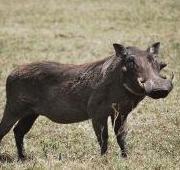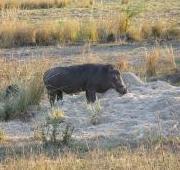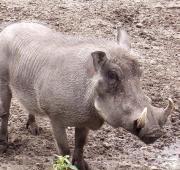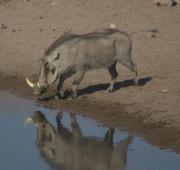 The warthog is a large species of pig that is found in the desert and shrub-lands of Africa. There are considered to be two species of warthog which are the common warthog and the desert warthog. The common warthog tends to be found in the more northern regions of Africa and the desert warthog is found in the south of Africa, and is sometimes also referred to as the Cape warthog.
The warthog is a large species of pig that is found in the desert and shrub-lands of Africa. There are considered to be two species of warthog which are the common warthog and the desert warthog. The common warthog tends to be found in the more northern regions of Africa and the desert warthog is found in the south of Africa, and is sometimes also referred to as the Cape warthog. The warthog is named after the two sets of tusks that are found on the face of the warthog. Warthogs use their tusks both for fighting off unwanted predators and other competing male warthogs, and the warthogs also use these tusks for digging in the dirt for grubs and insects.
The warthog is named after the two sets of tusks that are found on the face of the warthog. Warthogs use their tusks both for fighting off unwanted predators and other competing male warthogs, and the warthogs also use these tusks for digging in the dirt for grubs and insects.


Warthogs live together with other warthogs in small family groups that are known as sounders. These warthog groups generally have a few female warthog members and their young, and will have one male warthog member who is responsible for protecting the sounder and mating with the female warthogs.
Warthogs tend to be found in areas where there is a good supply of water, so that the warthogs are not only able to drink but also enjoy to wallow in the cool, muddy water. Warthogs also prefer to inhabit grassy and open plains but have been found living close to the border of the Sahara Desert.
The warthog has many predators in the African wild including lions, cheetahs and crocodiles but the human is one of the main predators of the warthog as they have hunted warthogs not just for their meat, but also for the ivory that is found in the tusks of the warthog.
The warthog has very poor eye sight although warthogs have a good sense of smell which allows the warthog to hunt for food and to detect any nearing predators. Warthogs are also good at running and jumping and are well known for running with their tails pointing towards the sky.

